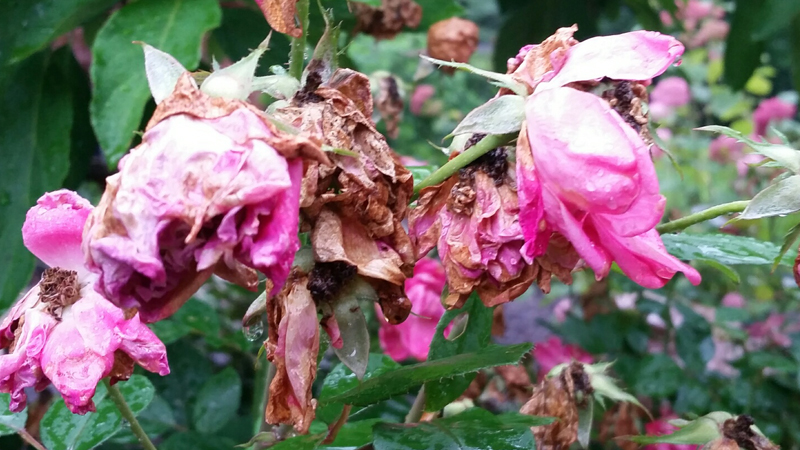Pesky culprits have one goal: kill your roses

By STEPHANIE HUGHES
OSU Ext. master gardener volunteer
CANFIELD
At a recent program,
a lady asked me what could be eating her roses. I told her without a sample or observance, I would only be guessing. I really need to know what the damage looks like on the plant.
I thought about this for hours after the program. Once I got home, I thought I would check my own plants to see if there was any issues on them. When I came home and looked, I found something was eating my roses, too. So, I rushed to find answers for her roses and mine, as well.
As I observed, I saw nothing but holes in the leaves, the blooms looked fine. As I came in the house I saw a little half-inch light green larva on my leg. Ah, a clue.
I went back out and inspected my plants by turning over leaves and looking around the plants, but I still found nothing.
It could be rose chafers (Macrodactylus subspinosus). These large beetles are smaller than Japanese beetles (not out yet), a tan color, with long legs, and are excellent fliers. I saw none.
It could be Curled Rose slug, a caterpillar that is metallic green above and gray beneath with yellow/brown heads. These curl up like a cut worm when disturbed. They are ¾-inch long, and skeletonize, then defoliate a rose bush, except for the largest veins of the leaves.
It also could be either the rose slug or the bristly rose slug. The rose slug is one of three common sawflies. At maturity, they all look like a ¼-inch wasp. The larvae are ½-inch yellow-green with yellow heads, and skeletonize the leaves. They are active from May through June, and can go up to fall.
Horticultural sprays or spinosad, which does not adversely affect pollinators, especially bees, can be used for control. Be sure to spray the undersides of the leaves as well for the most effective use. And, be sure to read and follow all pesticide labels (organic or conventional) before use.
The Bristly Rose slug is 5⁄8-inch long with a green body and long white bristles all over the body. They skeletonize, chewing leaves from the undersides, chewing holes through the tissue.
I have looked numerous times to no avail, so I will keep looking. Looking is called scouting, and it is the first step in figuring out exactly which pest is causing the problem and how to deal with it.
My next steps will be bringing in a cutting of the rose bush with leaves attached. This may help me find a rose slug that I can’t see out in the garden.
I may put on my headlamp and go out at night to see if I can find the culprit. Then, the battle plan will be developed. I love my roses and will fight the battle and be victorious over the enemy.
For details on these insects, go to http://go.osu.edu/roseslug http://go.osu.edu/rosechafer.
For details on growing and caring for roses, go to: http://go.osu.edu/roses.
 43
43
